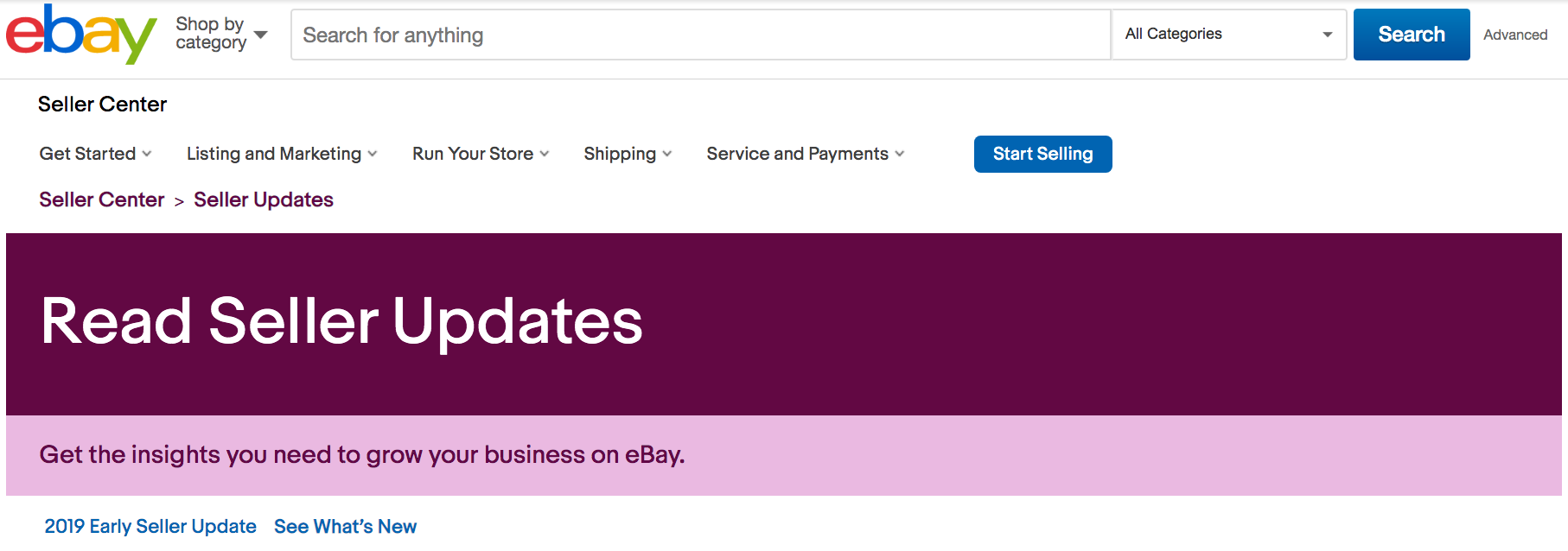5 Insider eBay Tips & Tricks for Shopify Sellers
Once you’ve successfully established your Shopify store, moving onto various marketplaces is the next obvious step. eBay is a particular favorite for sellers new to marketplaces because of its low barriers to entry, rapid time to first sale, and reasonably painless learning curve.
Despite these advantages and the large number of articles out there about selling on eBay, there are some surprising fundamentals that often get lost in the shuffle that Shopify sellers should be aware of.
Similarly, Etsy vs Shopify is another topic worth exploring. Be sure to check out that guide next.
Get MESA free for 7-days and enjoy support from automation experts!
1. eBay won’t let you redirect shoppers to a Shopify store.
eBay is a good place to make additional sales, but don’t count on it being a great place to build a brand or a larger business.
This is because virtually anything that might be done to direct shoppers to your Shopify store or to other non-eBay parts of a business is forbidden by eBay rules.
This isn’t just about one or two particular policies but about the spirit of the rules themselves. eBay wants eBay shoppers to have an eBay experience and to feel as though they’re transacting on and with eBay, rather than your store.
As a result, it’s better to give up before beginning on any notion of trying to use a brand’s presence on eBay itself to build its Shopify store. It’ll take a lot of your time and imagination, likely without producing any results, apart from a possible eBay suspension.
Instead, optimize the post-purchase experience to drive customers over to your Shopify store. Use branded packaging and include physical content marketing that introduces your customer to your brand (and your website domain). Consider including a bounceback coupon to encourage your customer to make a second purchase from your site.
2. On eBay, every shopper’s opinion of your products matters.

Both search ranking and feedback percentages are very important on eBay—both can mean the difference between a great many eBay sales and virtually no sales at all.
And just one or two instances of non-positive feedback can drastically harm both a brand’s search ranking and the persuasiveness of your feedback percentage. Fail to deliver for just a handful of shoppers and you may find that your sales drop catastrophically overnight.
So on eBay, remember that even transactions for very small amounts count for an awful lot. On eBay, you need to be sure that every shopper has a tip-top experience and is served promptly and efficiently.
3. On eBay, product details trump layout.
Appearances do matter on eBay, but they don’t matter nearly as much as Shopify merchants have been accustomed to.
The relentless focus on perfect wording, top-notch images, and an unparalleled content experience that’s often make-or-break for Shopify store visitors is misplaced on eBay.
eBay shoppers tend to care about fundamentals first. Is the product’s price amongst the most competitive on eBay? Does the listing spell out product measurements, specifications, and other details clearly? Are the shipping details, terms, and conditions understandable and agreeable?
Getting all the nitty-gritty product details up are make-or-break for eBay sales, before anything else. Making products look as lush, as beautiful, or as cool as possible is a distant second.
4. The rules change often and you’re expected to know them.

Remember that as a marketplace seller, you’re playing by someone else’s rules and policies—namely, eBay’s rules and policies.
And due to the realities of the e-commerce universe and eBay’s position in it, eBay’s rules and policies change often. Like, really often.
And here’s the kicker—you’re expected to know and understand them on your own. eBay won’t hesitate to make bulk changes to your listings when their platform changes, or to block your selling if a rule changes and you don’t update your presence to comply.
So plan to spend time regularly checking eBay’s seller updates page, even once you believe you’ve mastered eBay’s rules—otherwise, your stay on eBay may be a short one.
5. All eBay listings have an impending end date.
On Shopify or even on other marketplaces, you’re probably accustomed to thinking about product pages as long-lived things. A product page remains until its removed. On eBay, on the other hand, *every* listing has an end date, sold out or not.
Don’t be fooled by concepts like “Good ‘Til Cancelled” listings that appear to promise to remain in place until cancelled. Even “Good ‘Til Cancelled” listings end every 30 days before automatically relisting themselves—and billing you for listing fees in the process.
Work to quickly develop a sense for how different listing durations affect shopper urgency, eBay fees, and your relisting workload.
If you struggle, consider subscribing to eBay tools like inkFrog, whose Good ‘Til Cancelled Watchdog and Auto-Relist tools can help you to manage listing duration and relisting automatically.
It’s a Different—But Profitable—World
The key takeaway from a list like this one is that transitioning to selling more on eBay and building marketing workflows requires more than learning the nuts and bolts of eBay’s software platform.
There are real cultural and business differences that step-by-step tutorials often leave out, but that cause real headaches if you’re not prepared for them. So take it slowly, learn as you go, keep and open mind, read all you can, and if possible, enlist the help of an eBay veteran to smooth your path.
If you can master the differences, a new world of sales and profit await!


